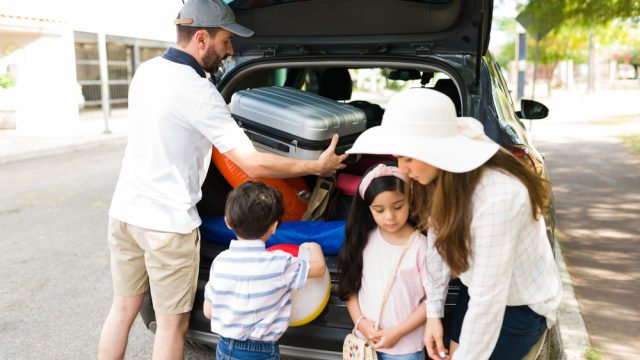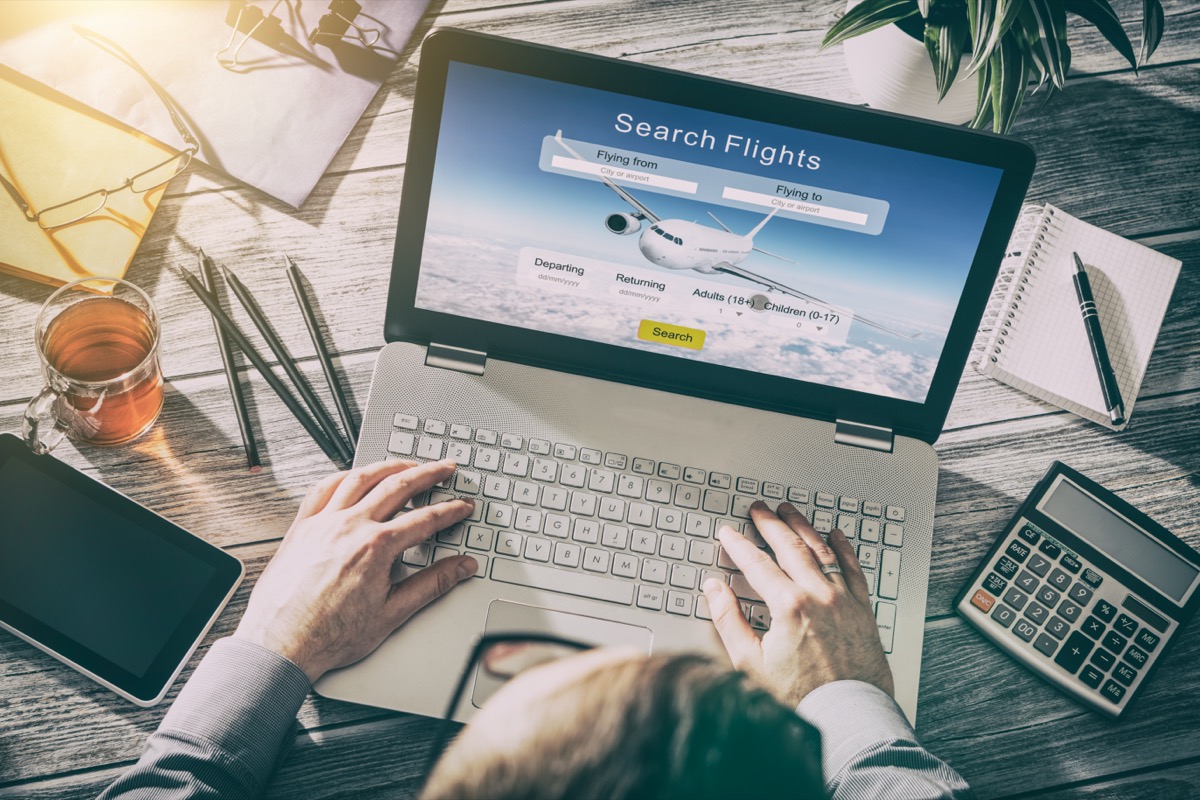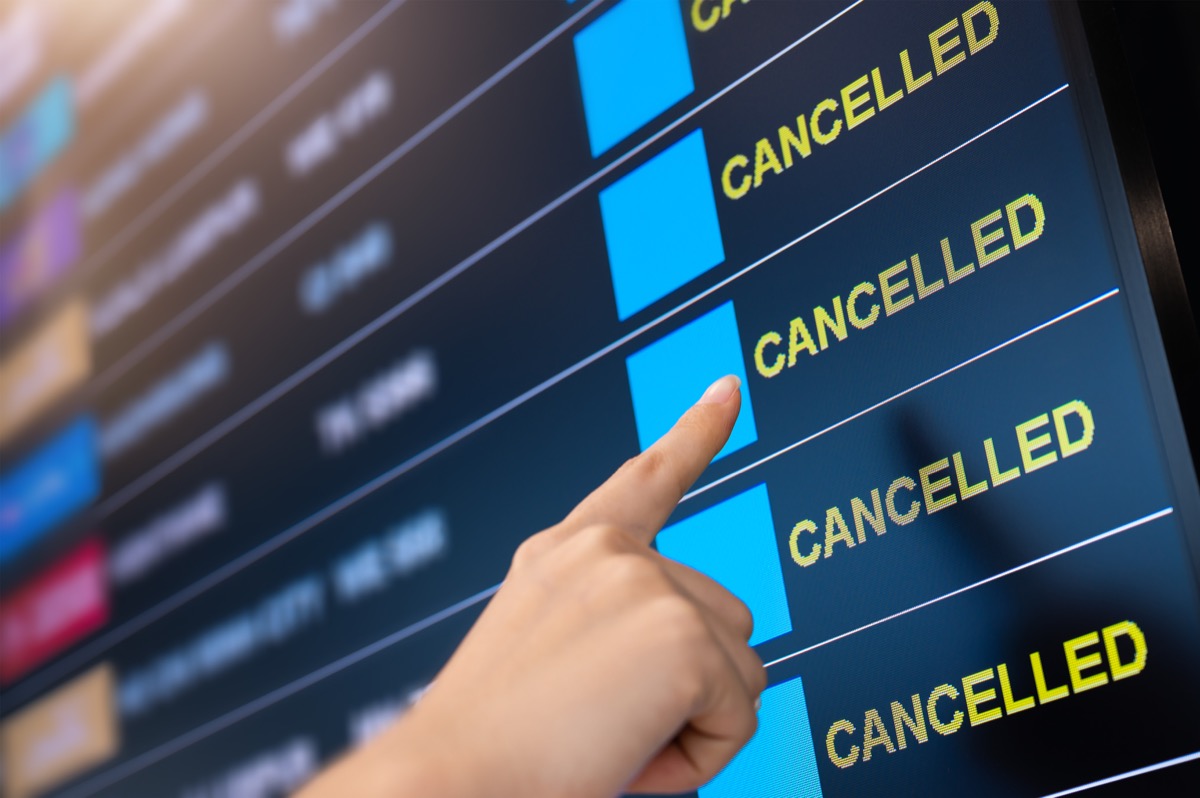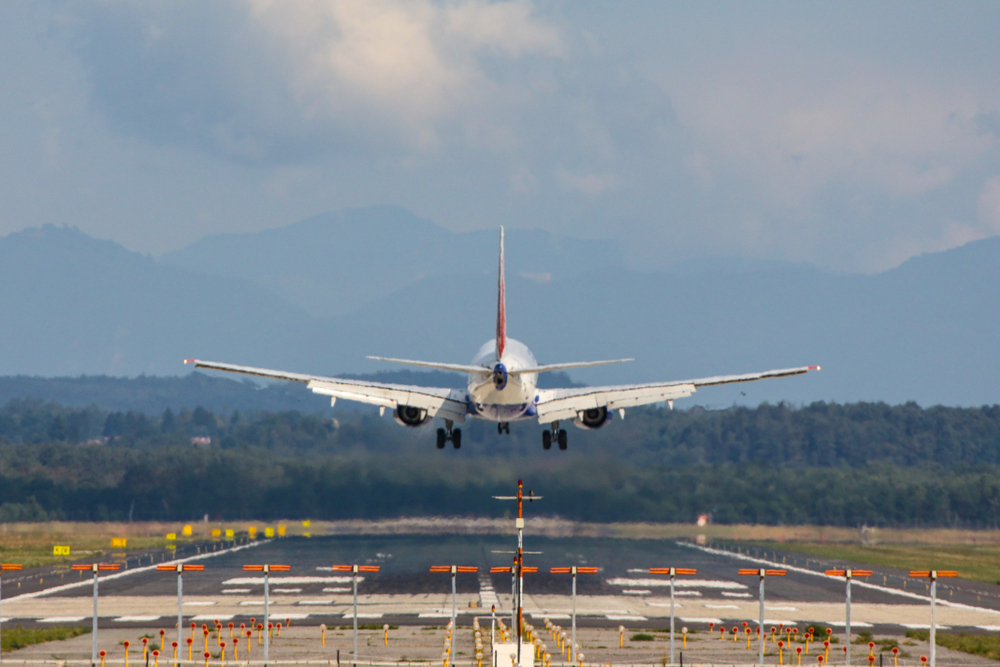The One Reason You Should Drive Instead of Flying, Pilots Say

Travelers are finally beginning to take to the skies again more than two years after the COVID-19 pandemic upended the airline industry. Data from the Transportation Security Administration (TSA) shows that 2,181,446 passengers passed through checkpoints on April 11, up from 1,468,972 on the same day last year and just 30,000 flyers short of the same date in 2019. But while the return to travel is a welcome relief to many, it’s also bringing back some of the familiar pains of going to the airport, including long lines, unexpected delays, and sudden flight cancelations. Before you book your next set of tickets, pilots say there’s one reason to avoid a trip to the airport altogether. Read on to see when you should be driving instead of flying.
RELATED: If You Hear These 7 Words on a Flight, an Engine Has Failed, Pilot Says.
Pilots suggest it’s best to drive to any destination within six hours away.

Whether you’re headed over an ocean or across the continent, sometimes there’s no avoiding getting on a plane. After all, the beauty of jet travel is how fast and efficient it can be for getting around. But according to pilots, it can be easy to become overreliant on flying and forget that sometimes the easier option is sitting right in your driveway.
“Drive when you can,” Tom Kubik, a retired pilot with 42 years of experience, told budgeting website Humble Dollar. “We draw a six-hour drive circle around our house. If we’re within six hours, we’re in the car. The airport experience and the hassles associated with flying these days make driving a much less stressful trip. That’s true even with gas prices where they are today.”
Flying is rarely the cheaper option compared to driving.

Unless you’re super pressed for time, choosing to drive versus hopping on a short-haul flight is usually the result of a budgetary decision simply due to the fact that car travel is almost always cheaper than jet setting. And while a solo traveler might stand to nearly break even on a long enough drive, anyone with children or family in tow will almost certainly see significant savings by choosing to hit the road instead.
Still, even if you’ve managed to score a major deal on airfare, you should consider the unforeseen expenses that come with plane travel. Besides potential baggage fees, there’s also the cost of getting yourself to the airport—or paying an excessive amount to stash your car near the terminal.
“Airport parking fees can be outrageous depending on the airport,” Kubik says. “It can also be a hassle with late and overcrowded buses.”
RELATED: For more up-to-date information, sign up for our daily newsletter.
Taking your travel arrangements into your own hands can help avoid any unexpected schedule changes.

Some years, it feels like Mother Nature knows how to exact the most agony on travelers by waiting for the busiest holiday weekends to unleash the most brutal weather. But while driving may still not be an option in all conditions, there’s a good chance that the same passing thunderstorms that can shut down an airport for an evening may barely affect your driving time to a nearby destination.
And it’s not just sudden storms that may derail your travel plans: Major airlines have canceled thousands of flights on short notice due to staffing shortages related to COVID or labor disputes over the past few months. Even if the forecast looks clear, a four-hour drive could be a safer bet if you’re looking to make it to your destination in time.
Driving is by far a more eco-friendly option when compared to getting on a short flight.

Traditional gas-powered cars are far from the image of planet-friendly thinking, but when compared to jets, they still offer a much more environmentally friendly option for travel. According to travel insurance company Allianz, running a fuel-efficient vehicle generates far less greenhouse-gas emissions than flying. By comparison, driving the 300 miles from Philadelphia to Boston would generate about 104 kilograms of carbon dioxide, while flying the same leg would generate around 184 kilograms per passenger. Of course, hybrid or electric cars would produce even fewer emissions.
Still need to get on a plane for a longer trip? Sometimes, your best option can be driving a little further to an airport that offers a direct flight. Not only will you save time by removing a connection, but your carbon footprint will be much smaller by avoiding as many fuel-draining takeoffs and landings as possible during your trip.
RELATED: Over 65? Don’t Forget to Do This After Boarding, Flight Attendant Warns.